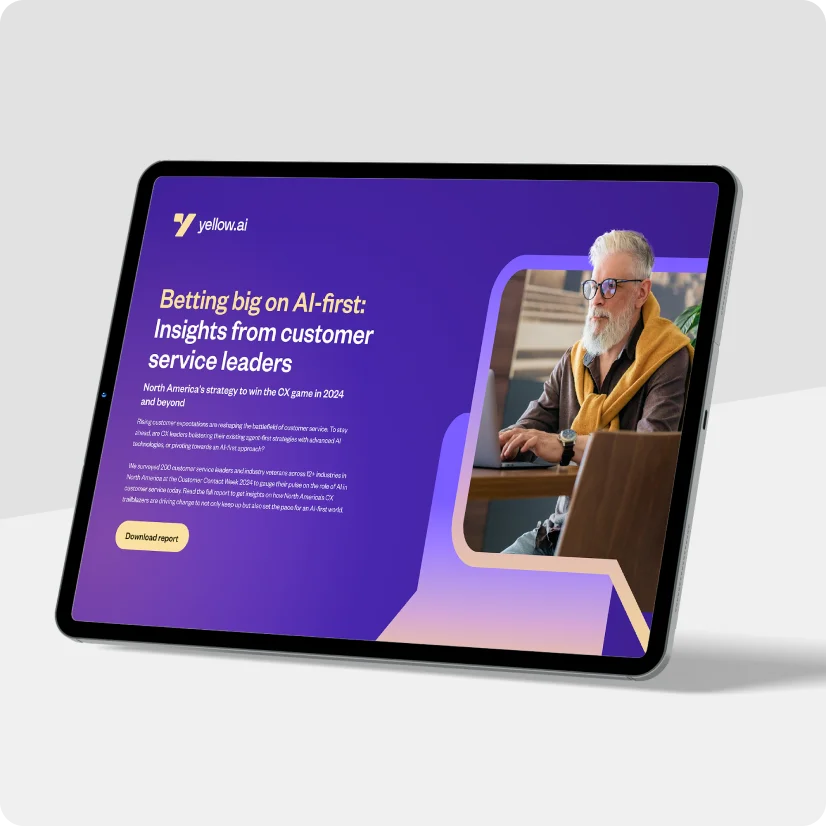Executive summary
This article is a comprehensive guide that navigates the transformative impact of automating human resources processes. We explore the nuances of HR process automation, examining its pivotal role in HR workflow automation, HR onboarding automation, day-to-day operations, and offboarding. This exploration addresses the pressing questions, “What is HR process automation?, and “Why HR automation?” while highlighting the indispensable reasons behind its growing adoption in the corporate world.
Embarking on the journey of HR automation is like stepping into a new era of workplace efficiency. With this transformative shift, the traditional, effort-intensive HR tasks evolve into streamlined, digital workflows. Imagine a workspace where the mundane intricacies of HR paperwork transform into a seamless symphony of automated processes. It is not just an upgrade; it’s a complete reimagining of the HR landscape.
HR automation is a beacon of modernization in the corporate world, redefining how businesses engage with their most valuable asset – their people. It’s a fusion of technology and human insight, where routine tasks are elegantly automated, allowing HR professionals to focus on what truly matters: nurturing and growing talent. This paradigm shift is not merely about adopting new tools; it’s about embracing a culture where efficiency and strategic HR management go hand in hand. As we delve into this dynamic world of HR automation, we uncover the layers that make it an essential strategy for businesses seeking to thrive in an increasingly competitive and fast-paced marketplace.
Related must-reads:
- HR chatbots – Benefits and use cases
- 8 ways digital HR assistants can transform HR functions
- HR ticketing system and why do you need it?
What is HR automation?
At the heart of every modern business lies a dynamic entity: the human resources department, pulsating with the energy of its people. HR automation is the catalyst that transforms this energy into a streamlined, efficient force. It’s the process of enhancing traditional human resources activities through digitalization, employing sophisticated software solutions to automate mundane and repetitive tasks.
Picture HR automation as a skilled orchestra conductor, seamlessly directing various aspects of your HR function – from onboarding and payroll management to timekeeping and benefits administration. This digital conductor ensures each note is played perfectly, eliminating the common errors and inefficiencies that often plague manual processes. By integrating these automated systems, HR departments can shift their focus from administrative tedium to strategic initiatives that drive business growth and foster a vibrant workplace culture.
The inception of HR automation stems from a fundamental need – to liberate HR professionals from the shackles of paperwork and administrative overload. In an age where every minute counts, dedicating valuable time and resources to manual, repetitive tasks is akin to sailing against the wind. HR automation sets a new course, harnessing the power of technology to sail toward efficiency and accuracy.
HR automation requires a blend of skill and adaptability as HR professionals learn to navigate and leverage these digital tools. The investment in training and adaptation, though substantial, pales in comparison to the manifold benefits. Automating your HR processes is not just about making tasks quicker; it’s about making the entire HR function more intelligent, more responsive, and more attuned to the strategic needs of the business.
The different types of HR automation
HR Automation is revolutionizing the way businesses manage their workforce, introducing efficiency and effectiveness into various HR processes. Let’s delve into the four critical types of HR automation and how they are reshaping the HR landscape:
1. Recruiting automation
Recruiting automation redefines the talent acquisition process, making it more efficient and effective. This automation involves:
- Automated job posting and candidate sourcing: Jobs are automatically posted on various platforms, and potential candidates are sourced using advanced AI algorithms.
- Resume screening and filtering: AI-driven tools screen resumes, filtering candidates based on predetermined criteria, ensuring only qualified candidates move forward.
- Automated interview scheduling: The system schedules interviews, sends reminders, and provides interviewers with candidate information, streamlining the interview process.
- Candidate engagement: Chatbots and automated messaging keep candidates engaged and informed throughout the hiring process.
2. Onboarding automation
Onboarding automation ensures a smooth transition for new hires into the organization, which includes:
- Automated document processing: New employees submit their documents online, which are automatically processed and stored.
- Training and induction programs: Automated scheduling of training sessions and induction programs, providing new employees with necessary resources and information.
- Access provisioning: The system automatically grants access to necessary tools and platforms based on the employee’s role and department.
- Integration into teams: Automated notifications introduce new hires to their teams and integrate them into the company’s communication channels.
3. Day-to-day HR automation
Day-to-day HR automation takes care of routine HR tasks, allowing HR professionals to focus on strategic initiatives:
- Leave and attendance management: Employees can apply for leave through an automated system, which manages approvals and tracks attendance.
- Expense claims and reimbursements: The system automates expense claims processing and reimbursements, reducing paperwork and speeding up the process.
- Performance evaluations: Automation tools assist in scheduling and managing performance reviews, compiling feedback, and tracking goals and achievements.
- Employee self-service portals: These portals allow employees to access and manage their personal data, benefits, and other HR-related information independently.
4. Offboarding automation
Offboarding automation manages the process when an employee leaves the company:
- Exit interviews and feedback collection: Automated scheduling of exit interviews and collection of feedback through digital forms.
- Asset return tracking: The system monitors the return of company assets and initiates follow-ups if needed.
- Access revocation: Automatically revokes the employee’s access to company tools and systems to maintain security.
- Final settlements and documentation: Ensures all final settlements are processed, and necessary documentation is completed seamlessly.
Each of these automation types plays a pivotal role in modernizing HR operations, contributing to a more streamlined, efficient, and employee-friendly HR department. By leveraging these technologies, businesses can significantly enhance their HR capabilities, leading to improved employee satisfaction and better overall organizational performance.
Why is HR automation important?
HR automation is a cornerstone in the evolution of modern business practices. Its significance in enhancing organizational functionality is multi-faceted, deeply impacting everything from recruitment strategies to employee satisfaction. Let’s understand why HR automation is not just beneficial but essential:
1. Improves organization’s time-to-hire
The ability to swiftly fill positions with the right talent is paramount in the growing business landscape. HR automation revolutionizes the recruitment process, making it faster and more efficient.
- Streamlined recruitment process: HR automation expedites the recruitment process. From resume screening to interview scheduling, automation reduces the time spent on each stage.
- Efficient candidate management: Automated systems swiftly identify and progress suitable candidates, reducing delays and enhancing the chance of securing top talent.
- Quicker decision-making: Automation accelerates decision-making processes, allowing faster responses to potential hires and reducing the risk of losing them to competitors.
2. Empower employees to be productive right from the start
A smooth onboarding experience is pivotal for new employees, and HR automation plays a crucial role in achieving this.
- Immediate productivity: Automated onboarding ensures new hires have immediate access to necessary tools and information, enabling them to contribute from day one.
- Positive first impressions: A smooth, organized onboarding process leaves a lasting positive impression on new employees, setting the tone for their journey with the organization.
- Eliminates onboarding bottlenecks: Automation removes the common bottlenecks in traditional onboarding, ensuring a seamless transition into the company.
3. Provides delightful employee experiences
The employee experience is greatly enhanced by HR automation. Automated systems streamline various employee-related processes, such as leave requests, benefits management, and performance reviews, making them more accessible and user-friendly.
- Effortless access to resources: Employees can easily access information, request leaves, and manage their benefits through automated systems, enhancing their overall experience.
- Increased satisfaction and engagement: When mundane tasks are automated, employees feel more satisfied and engaged, as they can focus on more meaningful work.
- Personalized employee interactions: HR automation allows for personalized interactions, addressing specific employee needs and concerns efficiently.
4. Allows HR to focus on high-value tasks
One of the most significant impacts of HR automation is liberating HR professionals from routine, time-consuming tasks. Freed from the demands of paperwork and administrative duties, HR teams can now direct their skills and expertise toward more strategic and impactful areas.
- Strategic involvement: Automation frees HR professionals from repetitive tasks, allowing them to focus on strategic aspects like talent management and employee development.
- Conflict resolution and employee relations: HR staff can dedicate more time to resolving conflicts and building stronger employee relationships.
- Data-driven decision-making: With automation tools, HR can analyze data to make informed decisions about employee satisfaction, performance, and retention strategies.
- Enhanced employee engagement: HR teams can invest time in creating programs and events that boost employee morale and foster a positive work culture.
Ready to elevate your HR function?

Top 9 HR process automation benefits to consider in 2024
HR process automation is more than just a technological shift; it’s a strategic move that brings a multitude of benefits to the table. Let’s explore how automating HR processes can be a game-changer for businesses:
1. Enhanced productivity through quick processing and data sharing
Automation accelerates HR processes, from data entry to report generation. This speed in processing and ease of data sharing elevates productivity levels across the board. Tasks that once took hours can now be completed in minutes, allowing HR teams to focus on more critical aspects of their roles.
2. Reduced employee turnover with heightened engagement
Automation contributes to a more engaged workforce. By simplifying processes like leave applications and performance reviews, employees feel more connected and valued. This heightened engagement can lead to a significant reduction in turnover, as satisfied employees are more likely to stay with the company.
3. Cutting down costs on storage and printing
The shift from paper-based to digital processes not only aids in environmental sustainability but also slashes storage and printing costs significantly. Digital documents are easier to store, access, and manage, eliminating the need for physical storage space and the costs associated with printing and paper supplies.
4. Compliance and policy adherence
Staying compliant with ever-changing HR laws and policies is a daunting task. Automation ensures that all processes are up-to-date with the latest regulations, thereby reducing the risk of non-compliance and policy violations.
5. Driving organizational growth with efficient hiring
Automated recruiting and onboarding processes allow organizations to hire more efficiently, reducing operational costs. This efficiency leads to better resource allocation, enabling the organization to grow and scale effectively.
6. Reduction in errors and document misplacement
Automation significantly reduces the chances of human error in data entry and document management. Misplaced or lost documents have become a thing of the past, as digital storage provides a secure and organized way to keep track of all HR-related documents.
7. Data-driven decision making
With the wealth of data generated through automated HR processes, organizations can make more informed decisions. Insightful reports and analytics provide a deeper understanding of workforce trends, helping in strategic planning and decision-making.
8. Enhanced collaboration with stakeholders
HR automation facilitates better collaboration between HR and other departments. By streamlining processes like hiring and training, HR can work more effectively with other stakeholders to ensure that the organization attracts, develops, and retains skilled labor.
9. More time for strategic analysis
One of the most significant benefits of HR automation is the liberation of time. With mundane tasks automated, HR professionals can dedicate more time to analyzing HR data, understanding employee needs, and strategizing for future growth and development.
10 HR process automation examples
Automation in HR isn’t just a buzzword; it’s a practical, transformative strategy that is reshaping how organizations manage their workforce. Let’s explore some common examples of automated HR processes that are making significant impacts in businesses:
1. Recruiting process automation
Automation has dramatically reshaped the recruitment landscape. From posting job ads across multiple platforms to tracking responses, automation streamlines these initial stages. Resumes are screened through AI-driven tools that filter candidates based on specific criteria, ensuring a more efficient review process. Most importantly, automated email correspondence maintains a steady line of communication with candidates, keeping them engaged and informed throughout their recruitment journey.
2. Employee onboarding
The onboarding process is pivotal in setting the tone for a new employee’s journey. Automated systems handle the collection and processing of necessary documents, replacing cumbersome paper trails with efficient digital records. Training schedules are systematized, ensuring new employees receive all the required orientation and resources without delay. Furthermore, equipment and access provisioning are seamlessly managed, ensuring new hires are equipped and ready to contribute from day one.
3. Offboarding management
Offboarding, often an overlooked aspect of the employee lifecycle, is critical in maintaining a professional and secure end to an employment term. Automation in offboarding includes scheduling exit interviews and collecting feedback through digital platforms. It also encompasses the meticulous process of final paycheck processing and the tracking of company asset returns, ensuring a thorough and compliant offboarding process.
4. Access management for apps and tools
In today’s tech-driven workplace, ensuring employees have timely access to necessary apps and tools is crucial. Automated systems grant or revoke access to company applications based on role, department, or changes in employment status. This automation extends to employee self-service portals, where employees can request access to additional tools, subject to approval workflows.
5. Paid leave management
Managing leave requests can be a complex process involving checking leave balances, securing manager approvals, and ensuring accurate payroll adjustments. Automation simplifies this process by allowing employees to apply for leave through a digital platform, which automatically processes these requests against available balances and manager approvals.
6. Expense claims automation
Manual expense claims are often prone to errors and delays. Automation transforms this process, allowing employees to submit claims digitally. Systems can automatically extract required data from uploaded receipts, route claims for approval, and process reimbursements swiftly, enhancing both accuracy and employee satisfaction.
7. Payroll processing
Payroll processing is a critical function where accuracy and timeliness are paramount. Automation in payroll encompasses the calculation of payables, deductions, and tax filings, ensuring employees are paid correctly and on time. Besides minimizing errors, it also ensures compliance with tax laws and regulations.
8. Time management and tracking
Time management in a modern workplace goes beyond manual timesheets. Automated systems enable employees to digitally log their hours, which are then processed for payroll and reporting purposes. It includes tracking attendance, overtime, and other relevant metrics, providing a comprehensive view of workforce management.
9. Employee benefits management
Employee benefits are a vital component of an employee’s compensation package. Automation in this area includes the management of benefits enrollment providing employees with a clear and accessible view of their entitlements. It also includes the management of changes in benefits in response to life events or changes in employment status.
10. Employee performance tracking
Tracking employee performance is vital for growth and development within any organization. Automated systems help in scheduling performance reviews, tracking goals and achievements, and collecting feedback. It streamlines the performance review process and also provides a more objective and comprehensive view of employee performance.
Things to consider to choose the right HR automation tool for your organization
Selecting the right HR automation tool can feel like navigating through a maze of endless options. But it’s more than just a tech purchase; it’s about finding a partner that aligns with the heartbeat of your organization. Let’s break down what really matters when choosing an HR automation tool.
Solving real problems: Before diving into the sea of HR tools, take a step back and ask, “What specific challenges are we trying to address?” Whether it’s smoothing out the kinks in your recruitment process or streamlining employee onboarding, your choice should be driven by your unique business needs.
Seamless integration is the magic word. Think of your current HR systems as members of an orchestra. The new tool you bring in should be like a skilled conductor, blending harmoniously with your existing systems without missing a beat. It should integrate effortlessly, creating a symphony of efficiency.
User-friendliness – The human touch: Any tool can be packed with features, but if using it feels like deciphering an ancient script, it’s not the right fit. An intuitive and user-friendly tool means less time on training and more on doing.
Growing with you: Your business isn’t static, and neither should your HR tool be. Choose a platform that scales and adapts to your needs, whether you’re ramping up your team or expanding across borders.
Budgeting with foresight: While budget constraints are real, don’t just look at the price tag. Consider the long-term value – the time saved, the efficiency gained, and the employee satisfaction boosted. That’s your actual ROI.
Compliance and security are non-negotiable: In a world where data breaches make headlines, it’s paramount to ensure your HR tool is a fortress of compliance and security. Protecting data is not just about safeguarding your reputation.
The power of data: In the age of data, an HR tool without robust analytics is like sailing without a compass. You need insights to navigate and make informed decisions about your workforce.
Vendor support is your safety net: A great vendor relationship is like having a reliable co-pilot. It means having support that’s just a call away, ready to help you navigate any turbulence.
Yellow.ai: Bringing the best of conversational AI to the HR table
Discover the future of HR with Yellow.ai’s Conversational EX Cloud: where conversational AI meets efficiency and innovation. Organizations embracing our platform have experienced a transformative 30% faster hiring and onboarding process, alongside a remarkable 40% improvement in employee satisfaction. By automating and streamlining HR tasks, from analyzing job applications to managing the entire onboarding journey, Yellow.ai doesn’t just change how you work—it revolutionizes it. Moreover, with 80% of employee queries being self-served, our platform significantly reduces the workload on HR teams, allowing them to focus on strategic initiatives. Imagine reducing the time spent on administrative tasks and focusing instead on what truly matters: building a satisfied and productive workforce.
Our platform leverages the power of next-gen AI, generative AI and multi-LLMs to streamline tasks from onboarding to leave management, complemented by 24/7 support and continuous learning, making your HR processes more efficient and responsive. With real-time insights and analytics, you’re equipped to make informed decisions, predict needs, and measure the impact of your initiatives, all while our scalable and customizable solution grows with your organization.
Ready to elevate your HR function?

Concluding thoughts: Navigating the digital shift in HR
HR automation is not just a fleeting trend but a transformative force reshaping the human resources landscape. It stands as a testament to the power of technology in harmonizing efficiency with human-centricity. The journey into HR automation is akin to setting sail on an ocean of possibilities, where every streamlined process and automated task unlocks potential for growth, innovation, and deeper human connection. In embracing this future, businesses are not just adopting technology; they are championing a workplace where human potential is realized to its fullest, aided by the seamless efficiency of automation.
Frequently asked questions (FAQs)
What is HR automation?
HR automation refers to the use of digital technologies to streamline and enhance various human resource processes. It involves integrating software tools to automate repetitive, manual HR tasks, thereby increasing efficiency, reducing errors, and freeing up HR professionals to focus on more strategic, value-added activities.
What HR tasks can be automated?
Several HR tasks can be automated, including recruiting processes like job postings and resume screenings, employee onboarding and offboarding procedures, payroll processing, leave and attendance management, performance evaluations, and employee self-service for benefits and personal data management. This automation reduces administrative burdens and improves overall workflow efficiency.
What is the future of HR automation?
The future of HR automation lies in increasingly sophisticated AI and machine learning capabilities, which will drive more predictive analytics, personalized employee experiences, and complex decision-making support. The focus will be on enhancing employee engagement, streamlining talent management, and offering strategic insights to shape organizational policies and culture.
What are the top 7 HR tasks?
The top 7 HR tasks typically include talent acquisition and recruitment, employee onboarding and training, payroll management, benefits administration, performance management, employee relations and engagement, and compliance with labor laws and regulations. These tasks form the core functions of HR departments, focusing on managing and supporting an organization’s human capital.
What are the goals of HR automation?
The primary goals of HR automation are to increase efficiency and accuracy in HR processes, improve employee experience and engagement, provide data-driven insights for strategic decision-making, reduce costs associated with manual processes, and ensure compliance with regulatory requirements. Ultimately, HR automation aims to create a more productive and strategic HR function that supports organizational growth.


























